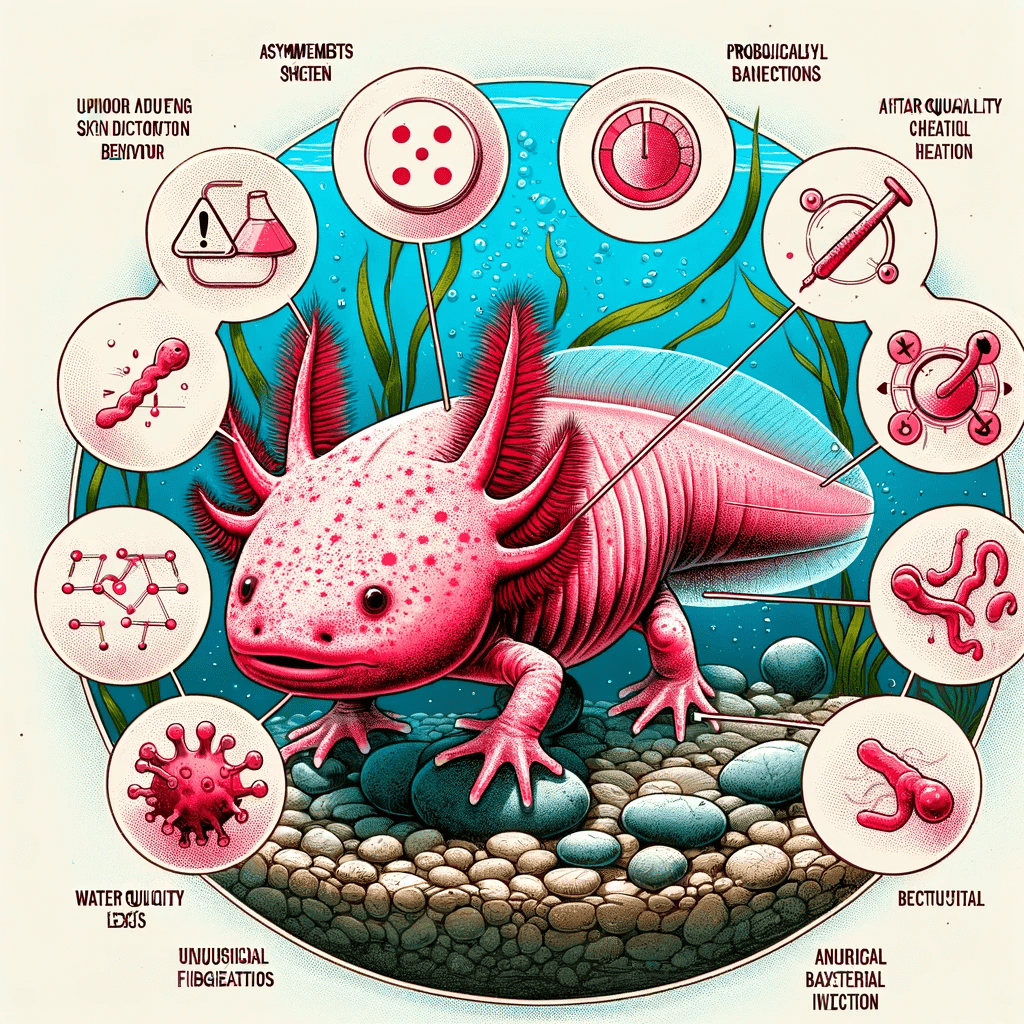Axolotl Skin Is Red and Unusual Behavior: Causes and Remedies
Deciphering Axolotl Skin Discoloration and Fidgety Behavior: Insights and Interventions
Noticing your axolotl’s skin turning pink or red and observing unusual fidgety behavior can be alarming for any pet owner. These symptoms can indicate underlying health issues that may require immediate attention. This blog post delves into the probable causes of these phenomena and outlines the steps you can take to remedy the situation, ensuring your axolotl remains in good health.
Understanding the Symptoms
- Skin Discoloration: An axolotl’s skin turning pink or red can signal irritation, stress, or more severe health concerns.
- Unusual Behavior: Fidgety or restless movements often suggest discomfort or an attempt to alleviate irritation.
Probable Causes
Several factors can contribute to these symptoms, including:
- Poor Water Quality: High levels of ammonia, nitrites, or nitrates can irritate the skin, leading to discoloration and discomfort.
- Bacterial or Fungal Infections: Infections can cause skin irritation, redness, and lead to unusual behavior as the axolotl tries to cope with the discomfort.
- Chemical Burns: Exposure to chlorine, heavy metals, or other harsh chemicals in tap water can cause skin reactions and stress-related behavior.
- Physical Injury: Scratches or wounds can become inflamed, appearing red, and causing the axolotl to become agitated.
Effective Treatments
- Water Quality Improvement: Immediately test and adjust your tank’s water parameters. Perform regular water changes and ensure the filtration system is functioning correctly.
- Isolate and Observe: Quarantine the affected axolotl to closely monitor its symptoms and prevent the potential spread of infections.
- Consult a Veterinarian: Seek advice from a veterinarian experienced with amphibians. They may prescribe antibiotics for bacterial infections or antifungal treatments.
- Environmental Adjustments: Review your tank setup for any potential sources of chemicals or objects that could harm your axolotl. Ensure the tank is free from sharp edges or abrasive decorations.
Prevention Strategies
- Regular Water Testing: Monitor your tank’s ammonia, nitrite, and nitrate levels consistently to maintain a healthy environment.
- Proper Water Treatment: Always use a water conditioner to neutralize chlorine and other harmful chemicals before adding water to your tank.
- Tank Maintenance: Keep the tank clean and well-maintained, removing any debris or uneaten food promptly.
- Stress Reduction: Provide a peaceful habitat with adequate hiding places to minimize stress and promote well-being.
Conclusion: Proactive Care for a Thriving Axolotl
By understanding the causes behind skin discoloration and unusual behavior in axolotls, you can take proactive steps to address these issues. Maintaining excellent water quality, monitoring for signs of distress, and seeking timely veterinary care are key to ensuring your axolotl enjoys a healthy, comfortable life. Remember, the well-being of your aquatic pet depends on your vigilant care and quick response to any signs of trouble.
Ensuring the health and happiness of your axolotl involves recognizing symptoms of potential problems and knowing how to address them effectively. Share this guide with fellow axolotl enthusiasts to spread awareness and foster a community of informed and caring pet owners.


